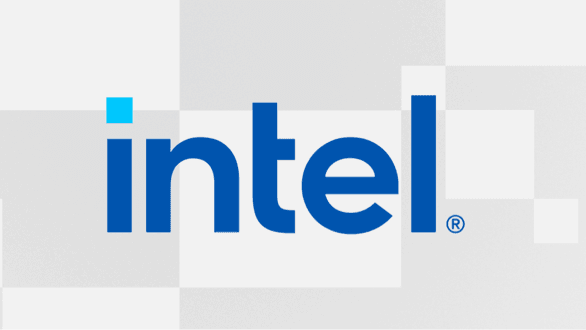Celcius
°Temp. member
Ouch, that's almost a $200 difference between the Core 7 and Core 9.
For an extra 4 e-cores and 200mhz on the boost?
Last edited:
Ouch, that's almost a $200 difference between the Core 7 and Core 9.
Leonidas hasn't even posted in this thread and y'all are out here writing songs about him and everything
Oh come on. We shouldn't pile on the guy. I thought we as a community were better.He needs to show his face to get cooked and eat crow.... Crow that's served up in a pot of brine.

Well, if you talk as much shit, is only a matter of timeI'm legit jealous of Leonidas. Why can't I be this popular?
So what happens to Leonidas when intel pops back into the lead? Will he be praised?
So what happens to Leonidas when intel pops back into the lead? Will he be praised?
So what happens to Leonidas when intel pops back into the lead? Will he be praised?



-3%lake
Intel Core Ultra 200K pricing leaked: 285K at $589, 265K priced at $394, and 245K for $309 - VideoCardz.com
Core Ultra 200K leaks, just hours before the announcement The new series is set to be unveiled tomorrow. Pricing has been leaked by Raichu, who is known for accurate Intel leaks. This is the pricing for the Core Ultra 200 series, also called Arrow Lake-S. There’s no big surprise here, although...videocardz.com


Wrong,Those chips essentially solve nothing for Intel.
Efficiency is still miles behind ARM for casual laptops and mobile productivity. Leaked M4 is no slouch and Qualcomm is getting surprisingly competent.
Power and gamer mindshare? Yeah, good luck with restoring your reputation after that voltage fiasco without a semblance of RMA policy.
APU? We are not even touching that subject. Strix Point will be a default choice for portable gaming and PS5 Pro APU shows that you can get quite a lot of even with older Zen chips.
Strictly speaking there is very little room for growth on a gaming CPU market (I still see almost zero reasons to upgrade my 5800x3d) and Intel has nothing to offer to the most fast-growing segments.











Here are the slides in English.

Intel Core Ultra 200S Arrow Lake-S desktop processors announced: Lion Cove, Skymont, Xe-LPG, NPU and LGA-1851 - VideoCardz.com
Arrow Lake-S is here, up to 24 cores, 125W and new socket Intel officially introduces the new series for desktop PCs. The Core Ultra 200 series is an update for desktop systems, focusing on power efficiency. It features newer Performance and Efficient core architectures, new graphics, and...videocardz.com










Wrong,
Well why even upgrade?Honestly this is a disappointment. I was one of the few who knew it was a possibility that the Arrow Lake would actually perform worse than the 14 series, but I expected the power consumption to drastically decrease.
Yes, there was a decrease, but it's still quite a bit higher than I was thinking Intel needed.
Remains to be see how the more mainstream CPUs do.
Short version: if you have a 7800X3D, the 9800X3D is your best hope for an upgrade.
I am curious how much Intel CPUs will be helped using the CAMM2 RAM.
How the turntables. Intel now focusing on efficiency on their slides (which seems to still be behind the competition by the way)Here are the slides in English.

Intel Core Ultra 200S Arrow Lake-S desktop processors announced: Lion Cove, Skymont, Xe-LPG, NPU and LGA-1851 - VideoCardz.com
Arrow Lake-S is here, up to 24 cores, 125W and new socket Intel officially introduces the new series for desktop PCs. The Core Ultra 200 series is an update for desktop systems, focusing on power efficiency. It features newer Performance and Efficient core architectures, new graphics, and...videocardz.com












From what I heard, they dropped HT out of desperation. This is something they didn't want to do. Which is worrying.
Seems like some games will need to get patched / optimized. New architecture is new.Here are the slides in English.

Intel Core Ultra 200S Arrow Lake-S desktop processors announced: Lion Cove, Skymont, Xe-LPG, NPU and LGA-1851 - VideoCardz.com
Arrow Lake-S is here, up to 24 cores, 125W and new socket Intel officially introduces the new series for desktop PCs. The Core Ultra 200 series is an update for desktop systems, focusing on power efficiency. It features newer Performance and Efficient core architectures, new graphics, and...videocardz.com










So these slides were done with different memory for each CPU.
The 285K used DDR5 6400 Mbps.
The 14900K used DDR5 6000 Mbps
And the 9950X used DDR5 5600 Mbps.

I'm sure a particular someone will be jumping to criticiseSo these slides were done with different memory for each CPU.
The 285K used DDR5 6400 Mbps.
The 14900K used DDR5 6000 Mbps
And the 9950X used DDR5 5600 Mbps.
I'm sure a particular someone will be jumping to criticiseAMDIntel for their misleading slides.

Intel ran JEDEC speeds, as they always do.I'm sure a particular someone will be jumping to criticiseAMDIntel for their misleading slides.
Intel ran JEDEC speeds, as they always do.
Arrow Lake = 6400
Raptor Lake = 5600
Zen 5 = 5600
Different CPUs have different capabilities. If Intel were to pull an AMD, they would have overclocked the RAM towards the sweet spot to make Arrow Lake look better (Zen 5 slides used overclocked RAM, which favored AMD numbers, as you would expect from an AMD first party slide).
You seem very ignorant when it comes to this subject.... you taught me nothing, yet again.Allow me to teach you a new thing today.
The official max memory speeds that Intel publishes are always 1dpc. For example, the 14900K, has max speed of 5600 Mbps for 1 Dimm per Channel. But a speed of 5200 Mbps for 2 dimms per channel.
So for using dual channel memory, the official value is 5200 Mbps. Not 5600 Mbps.
Then again, no one cares about these official numbers and will just buy and run the memory they want to. Often, above the official specs.
You seem very ignorant when it comes to this subject.... you taught me nothing, yet again.


Your ignorance regarding DDR5 is still showing.That is because you choose to ignore the facts. Read Intel's specs sheets and you can confirm it's true.

Intel® Core™ Processors (14th Gen) - Quick Reference Guide (PDF)
Use this quick reference guide for an overview of Intel® Core™ Processors (14th Gen), including what's new and the spec table.www.intel.com
BTW, did you notice this slide?
We were right in saying performance in games, for the 285K would change by 5%. We just missed the direction.

Your ignorance regarding DDR5 is still showing.
Also, your slide is for 265K, which Intel claims is ~5% slower than 285K...
At least I can correctly read slides and am not going around posting false and misleading info... something you are quite good at...Damn, you are an awful liar.
At least I can correctly read slides and am not going around posting false and misleading info... something you are quite good at...
The Intel slides have it practically tied with the 9950X, which we know is practically tied with the 9700X. If there's a difference it should be 1-2% only, which you already agreed is meaningless. After the 24H2 update we would expect the 9700X to be very close to the 14900K also.+faster in gaming than my current rig (Zen5 lost to my overclocked 13600K)
The Intel slides have it practically tied with the 9950X, which we know is practically tied with the 9700X. If there's a difference it should be 1-2% only, which you already agreed is meaningless. After the 24H2 update we would expect the 9700X to be very close to the 14900K also.
Maybe so, but it remains to be seen.The Intel slides have it practically tied with the 9950X, which we know is practically tied with the 9700X. If there's a difference it should be 1-2% only, which you already agreed is meaningless. After the 24H2 update we would expect the 9700X to be very close to the 14900K also.
I am only going to look at the positives, since some of you people are being negative.
The day Leonidas says something negative about Intel is the day we will know that his NeoGaf account got hacked.You are cracking me up, dude.
